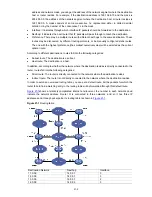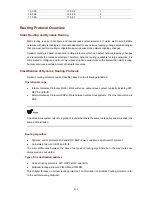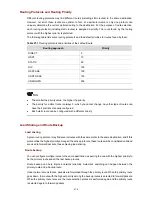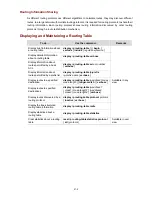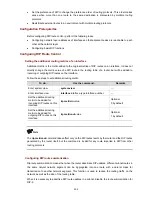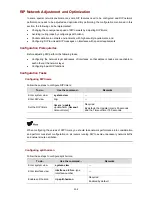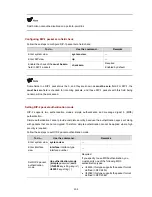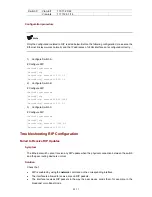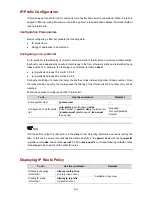
23-4
z
Related RIP commands configured in interface view can take effect only after RIP is enabled.
z
RIP operates on the interfaces attached to a specified network segment. When RIP is disabled on
an interface, it does not operate on the interface, that is, it neither receives/sends routes on the
interface, nor forwards any interface route. Therefore, after RIP is enabled globally, you must also
specify its operating network segments to enable it on the corresponding interfaces.
Setting the RIP operating status on an interface
Follow these steps to set the RIP operating status on an interface:
To do...
Use the command...
Remarks
Enter system view
system-view
—
Enter interface view
interface
interface-type
interface-number
—
Enable the interface to receive RIP update
packets
rip input
Enable the interface to send RIP update packets
rip output
Enable the interface to receive and send RIP
update packets
rip work
Optional
Enabled by
default
Specifying the RIP version on an interface
Follow these steps to specify the RIP version on an interface:
To do...
Use the command...
Remarks
Enter system view
system-view
—
Enter interface view
interface
interface-type
interface-number
—
Specify the version of the
RIP running on the
interface
rip version
{
1
|
2
[
broadcast
|
multicast
] }
Optional
By default, the version of the RIP
running on an interface is RIP-1.
RIP Route Control
In actual implementation, it may be needed to control RIP routing information more accurately to
accommodate complex network environments. By performing the configuration described in the
following sections, you can:
z
Control route selection by adjusting additional routing metrics on interfaces running RIP.
z
Reduce the size of the routing table by setting route summarization and disabling the receiving of
host routes.
z
Filter incoming and outgoing routes.




